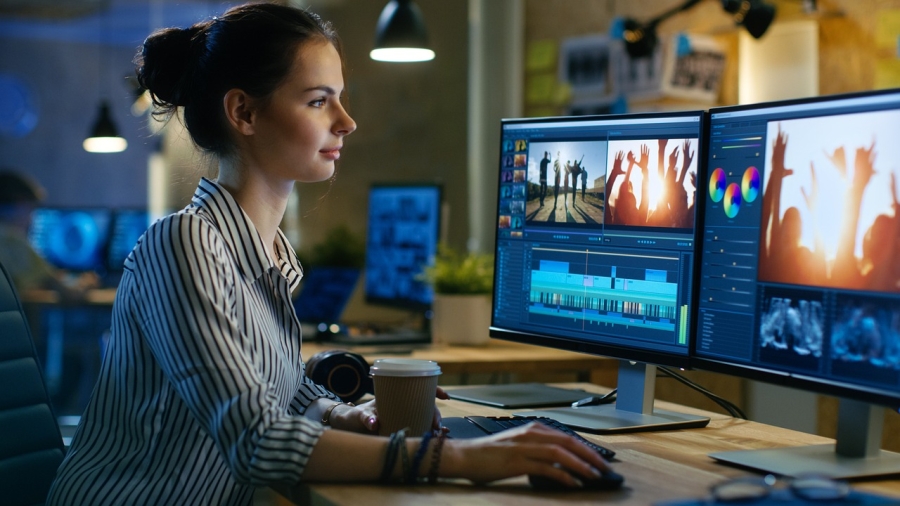Editing and Special Effects in Film: A Comprehensive Guide 🎬✨
Editing and special effects (VFX) are crucial elements of filmmaking, playing an essential role in shaping the final product. While editing focuses on refining the narrative by selecting and arranging footage, special effects bring the director's creative vision to life through visual enhancements. In this comprehensive guide, we will explore the fundamentals of film editing, the types of special effects, and the roles that professionals in these fields play to create the polished films we enjoy on the big screen.
1. What is Film Editing? 🎬
Film editing is the process of cutting, rearranging, and combining raw footage into a coherent and engaging story. Editors work closely with directors and other members of the production team to ensure that the pacing, flow, and emotional impact of a film are in line with the vision for the project.
Key Components of Film Editing
- Cutting: The basic act of trimming the raw footage and assembling it into the desired sequence.
- Continuity Editing: Ensuring the film maintains logical and visual consistency. This includes match cuts, transitions, and correcting any continuity errors that may arise during filming.
- Pacing: Editing is used to control the rhythm of the story, creating tension, suspense, or relaxation through the timing of shots.
- Sound Editing: The process of adjusting, adding, or removing sound elements, such as dialogue, music, and sound effects, to support the visual narrative.
2. Types of Film Editing 🎬
Different types of editing techniques serve specific purposes in storytelling. Here are a few key types:
1. Linear Editing
Linear editing involves working with footage in a sequential manner. It was the traditional method used in film editing, where editors physically cut and joined segments of film together.
2. Non-Linear Editing (NLE)
Non-linear editing has revolutionized the film industry. With software like Adobe Premiere Pro, Final Cut Pro, and Avid Media Composer, editors can freely manipulate footage, make adjustments, and experiment without worrying about preserving the original sequence.
3. Montage Editing
A montage is a sequence of shots that are edited together to convey a passage of time or a series of related events. Famous montages are used to compress time and visually showcase progress or change.
- Example: The training montages in Rocky showcase this technique perfectly.
4. Parallel Editing (Cross-Cutting)
Parallel editing involves cutting between two different scenes or storylines happening simultaneously. It can create tension, show the relationship between different characters or events, and help build suspense.
- Example: In The Godfather, cross-cutting between Michael's baptism and the violent murders occurring at the same time is a masterclass in parallel editing.
5. Jump Cuts
Jump cuts are a type of edit where the action skips forward in time, creating a disorienting or abrupt change in the sequence. It is commonly used in modern filmmaking to give a sense of urgency or to break traditional continuity.
3. The Role of Special Effects (VFX) 🎨
Special effects (often referred to as visual effects or VFX) are used to enhance or create images that are impossible to achieve during filming. These effects are added during post-production and are a significant part of modern filmmaking, especially in genres like science fiction, fantasy, and action.
Key Categories of Special Effects (VFX)
Practical Effects: These are effects created physically on set, such as explosions, prosthetics, and animatronics. They can be filmed directly during production and later enhanced with digital effects.
Digital Effects: These include all effects that are created or enhanced digitally, such as CGI (computer-generated imagery), motion capture, and compositing. Digital effects are often used to create environments, creatures, and elements that would be impossible to shoot in real life.
4. Types of Special Effects (VFX) 🎨
1. CGI (Computer-Generated Imagery)
CGI is one of the most common and versatile special effects used in films. It refers to images created by computers to simulate realistic scenes or fantastical elements. From entire landscapes to characters, CGI helps filmmakers create the impossible.
- Example: The entire world in Avatar is created with CGI to bring the alien planet Pandora to life.
2. Green Screen (Chroma Key)
The green screen technique allows filmmakers to film a subject against a solid color background (usually green) and replace it with digital imagery in post-production. This technique is widely used in creating fantastical environments and environments that would be too costly or impossible to film.
- Example: The space battles in Star Wars are primarily created using green screen techniques, with digital effects added in post-production.
3. Motion Capture (MoCap)
Motion capture is used to record the movements of real actors or objects and translate them into animated characters or objects. It allows for highly realistic and nuanced performances that can be used for animated characters.
- Example: In The Lord of the Rings, Gollum’s movements were created using motion capture to accurately reflect the actor’s performance.
4. 3D Animation and Modeling
In 3D animation, virtual objects and characters are created in a three-dimensional space and manipulated to simulate movement. These effects are particularly useful for creating creatures, landscapes, or elements that would be difficult or dangerous to shoot in real life.
- Example: The dinosaurs in Jurassic Park are created with 3D animation to bring them to life in the real-world setting.
5. Digital Compositing
Digital compositing is the process of combining multiple visual elements into one image or scene. It is used to integrate live-action footage with computer-generated images or to merge several layers of digital effects seamlessly.
- Example: In The Matrix, digital compositing was used to create the iconic bullet-dodging scene, blending live-action and digital elements.
5. How to Get Started in Editing and Special Effects 🎬✨
Both editing and special effects are technical skills that require practice, creativity, and specialized software knowledge. Here’s how to get started:
1. Learn Editing Software
Start by learning popular editing software such as Adobe Premiere Pro, Final Cut Pro, or Avid Media Composer. These tools are used by professionals in the industry and offer a wide range of features to help you create polished content.
2. Understand Special Effects Software
For VFX, familiarize yourself with programs like Adobe After Effects, Blender, and Autodesk Maya. These tools allow you to create everything from simple animations to complex visual effects.
3. Take Online Courses
There are many online platforms offering courses on both film editing and VFX. Platforms like Udemy, Skillshare, and MasterClass have courses taught by industry professionals, helping you to learn the craft at your own pace.
4. Build a Portfolio
Start creating your own short films or sequences to showcase your editing and VFX skills. This portfolio will be essential for applying to jobs or freelance work in the film industry.
5. Gain Experience on Film Sets
Look for internships or volunteer opportunities with film production companies to gain practical experience. Hands-on learning on set will give you insight into the real-world workflow of editing and special effects.
6. Challenges in Editing and Special Effects 🎥
Time-Consuming: Both editing and special effects can take a significant amount of time to perfect. Whether it’s cutting and arranging footage or creating complex visual effects, these tasks require patience and attention to detail.
Technical Issues: Editing and VFX professionals often face technical challenges with software or equipment that can delay production timelines.
Creative Differences: Working as part of a team can sometimes lead to differing creative visions. Collaborating closely with directors, producers, and other departments is key to overcoming these hurdles.
Conclusion: Mastering Editing and Special Effects 🎬✨
Editing and special effects are integral to the filmmaking process. Together, they transform raw footage into a compelling, visually stunning narrative that captivates audiences. If you're passionate about these fields, consider gaining experience, experimenting with software, and building a strong portfolio to start your career.
For more information and job listings in editing and special effects, be sure to visit MusicalArts.com and Jobs.MusicalArts.com for the latest opportunities.




